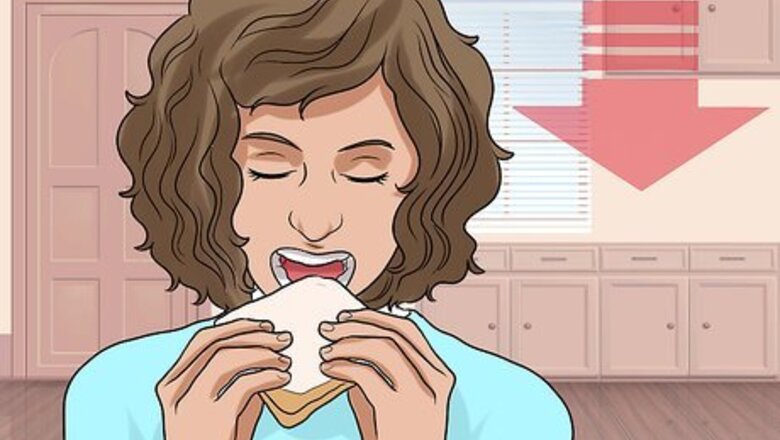
views
X
Trustworthy Source
Mayo Clinic
Educational website from one of the world's leading hospitals
Go to source
Many different diets and dieting programs suggest varying levels of carbohydrates during the day and at each meal. Some specifically say to eat little to no carbs in the evening (or at your dinner meal) because your metabolic rate slows down in the evening due to reduced physical activity when you sleep, but it's actually more important you pay attention to your total consumption of carbs than simply when you eat them. If you're looking to maintain a low-carbohydrate intake all day, there are easy ways to make your dinner meal fall into line with your low-carb dieting plan.
Decreasing Your Carbohydrate Intake at Dinner
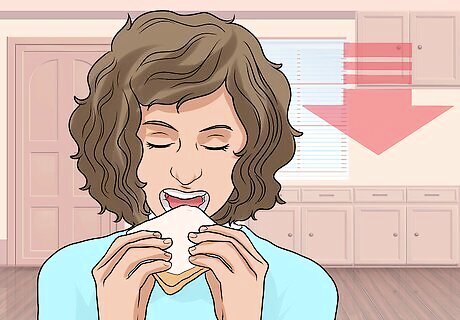
Limit your intake of grains. One of the biggest sources of carbohydrates in a Westernized diet is grains. Items like bread or pasta are not only a common food choice, but are also some of the foods that contain the highest amount of carbohydrates, and these foods are often eaten in large portion sizes. If you want to make your dinnertime meal lower in carbohydrates, cut out the grain food group from this meal (just make sure you are getting enough servings earlier in the day during breakfast and lunch). It's an easy way to cut carbs and calories. Limit items like: bread, rice, quinoa, oatmeal, pasta, tortillas/wraps, rolls or buns and couscous. If you do choose to have a grain, keep your total carbohydrate intake low by making sure to measure an appropriate portion size. Measure out 1/2 cup or 2 oz of a grain per serving and limit yourself to only one serving. Also go for 100% whole grains over refined grains. These items have much more fiber and other beneficial nutrients, such as B vitamins. So if you want to have a grain at dinner, it's wise to choose whole grain, minimally processed items.

Be mindful of starchy proteins and vegetables. Another very common source of carbohydrates are starchy vegetables and starchy forms of protein. Again, these foods are popular in Westernized diets and account for a large portion of our carbohydrate intake. Starchy vegetables include foods like: peas, corn, potatoes, yams and winter squashes. Starchy protein sources include beans and lentils. These foods are high in carbohydrates, but do offer a wide variety of beneficial and healthy nutrients like fiber, protein and many minerals like calcium, iron and B vitamins. Completely cutting these foods out from your diet isn't recommended, because you may experience a variety of temporary health effects such as headache, weakness, fatigue and constipation. However, if you're only limiting or avoiding them at dinner, that's appropriate. If you do choose to include an occasional serving of these foods at your dinner time meal, make sure to measure out the appropriate portion size. Measure out 1 cup of starchy vegetables or 1/2 cup of starchy protein sources. To cut carbs even more, only go for a 1/2 cup of starchy vegetables. You'll still get to enjoy the taste and flavor but minimize your carbohydrate intake.
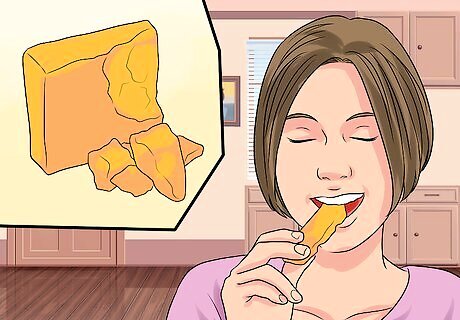
Choose lower carb sources of dairy. Surprisingly, the dairy group is another source of carbohydrates. The sugar in dairy (lactose) is the main source of carbohydrates in these calcium-rich foods. Be aware that foods in this group can be high in fat; therefore, reduced or low-fat varieties should be used, such as skim or 2% milk. The reduced fat varieties have the same amount of protein, calcium and riboflavin as their full-fat equivalents, but wit lower fat and calories. Although dairy foods do contain carbohydrates, the most carbohydrate-rich foods are milk, yogurt and cottage cheese. It should be noted that the total carbohydrate of dairy foods is significantly lower than items like grains, starchy vegetables or fruits. Solid cheeses (like cheddar or mozzarella) have very minimal amounts of carbohydrate and can be included in a low-carb meal without significantly increasing your total carbohydrate intake. Just remember that these also contain high amounts of fat and calories, so go for low-fat versions. If you're having something like yogurt for dinner, make sure to measure out the appropriate portion size. Measure out 1 cup or about 8 oz of dairy foods per serving. Like starchy vegetables and protein, dairy foods do offer a variety of great health benefits like being a great source of protein, calcium, Vitamin D, magnesium and potassium. Only limit these items at dinner if possible and include a serving or two earlier in the day.
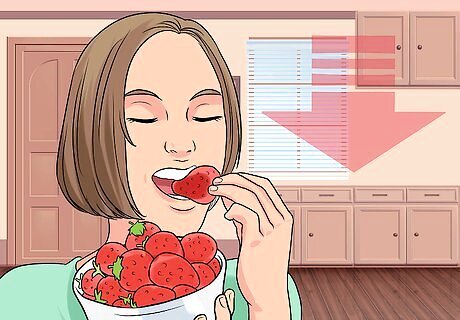
Limit your fruit consumption at dinner. Fruit is the last food group that also contains a significant amount of carbohydrates. Monitor how much you're eating in the evenings to make sure your dinners are lower in carbohydrates. Fruits contain a natural sugar called fructose in addition to containing nutritious fiber. Both of these count towards your total carbohydrate intake. Limit your intake of fruit at dinner. If you're going to have a serving, make sure to measure out 1/2 cup serving per portion. In addition, you may want to stick to fruits that are naturally lower in sugar and carbohydrates like: strawberries, blueberries, cranberries, blackberries or raspberries. Similar to dairy foods or starchy vegetables, fruits come with a vast array of nutrients and antioxidants that are associated with positive health benefits. Fruits have a lot of fiber, Vitamin C, potassium and folic acid. It is not recommended to completely avoid fruit; however if you have a total of five servings of fruit and vegetables during the day, you can safely avoid them at dinner.
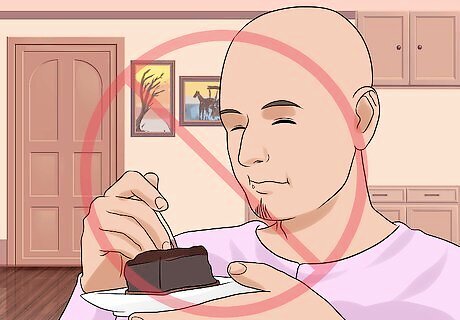
Avoid processed grains and refined sugars. To help minimize your carbohydrate intake at dinner and evenings, avoid processed grains and refined sugars. These foods are not only higher in carbohydrates but offer very little in the way of nutritional benefits. Refined carbohydrates include processed grains and refined sugars. They are highly processed and all the beneficial nutrients are removed or stripped during the processing. They're left with a high carb count and a higher calorie count. Items that are refined carbohydrates include: white bread, white rice, plain pasta, cookies, crackers, candy, cakes/pies, breakfast pastries, bagels, sugary cereals, pretzels and plain white tortillas or English muffins. This also includes sweetened beverages and alcohol. Skip the beer or mixed cocktail and give up the sweet teas, sweetened coffees, fruit juices and sodas. Since these foods offer little to no valuable nutrition, avoid these as much as possible during the day and during your dinnertime meal.
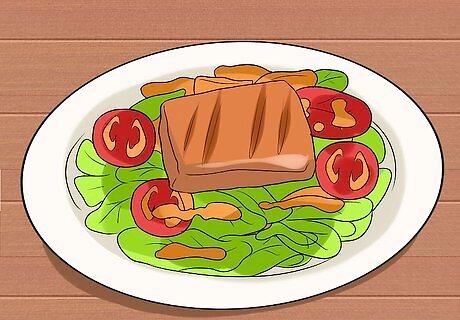
Make most dinners lean protein and a non-starchy vegetable. If you're cutting out or limiting carbohydrates at dinner you're going to be limiting yourself to a select few food groups. Choose nutritious foods to make your dinner count. For the lowest carbohydrate meal, make half of your dinner a lean protein and half of your dinner a non-starchy vegetable. Both of these food groups are naturally very low in carbohydrates (in addition to fat and calories) and will automatically keep dinners low-carb. For example, you could have: grilled salmon over a spinach salad, grilled chicken and broccoli stir-fry without rice, or flank steak with steamed asparagus. However, if you want to include some healthier and nutrient-dense sources of carbohydrates you could have meals like: a spinach salad with grilled chicken and 1/4 cup blueberries and raspberries, or a piece of baked fish with 1/2 cup of mashed sweet potatoes or 1 cup of a cold lentil and vegetable salad.

Make nutritious swaps. Just cutting out all the carbs from your dinner meal can be difficult; however, if you make some nutritious swaps for those carbs, you may feel like you miss them a little less. Try using cauliflower. This cruciferous vegetable can take the place of a whole variety of carbohydrates. You can grate it into "rice" or "couscous", you can mash it into mashed "potatoes" and you can even bake into a "pizza crust." You can also try using spiralized zucchini or yellow squash. A spiralizer will cut these low-carb vegetables into spaghetti-like noodles which can help take the place of regular pasta. Instead of bread, go for lettuce wraps. You can use romaine lettuce, butter lettuce cups or even kale or Swiss chard leaves. Wrap up your sandwich fillings for a low-calorie and low-carb wrap. If you're looking for a lower carb dessert, try plain yogurt with cinnamon and berries, chocolate pudding made with avocado or homemade peanut butter cups using dark chocolate and sugar-free peanut butter.
Moderating Your Carbohydrate Intake at Other Meals

Choose a moderately low-carb breakfast. Your morning meal may be a big source of carbohydrates in your diet. Many common breakfast foods are higher in carbohydrates, which can make following a low-carb diet more difficult. Common breakfast items like waffles, cereal or even granola bars are all loaded with carbohydrates. Granted, these aren't necessarily considered "unhealthy," but they may not fit into your low-carb diet plan. Limit breakfast foods that are typically higher in carbohydrate in favor of more protein-dense items. Be mindful of foods like: waffles/pancakes, cereal, granola/granola bars, toast, wraps/tortillas, muffins, bagels, English muffins and pastries. Instead start your day of with a hit of protein. This helps keep you more satisfied during the day and may help prevent unnecessary snacking. Choose breakfast meals like: two hard boiled eggs, an omelet with low-fat cheese and sautéed spinach, plain greek yogurt with nuts, or two deli meat and cheese roll-ups.
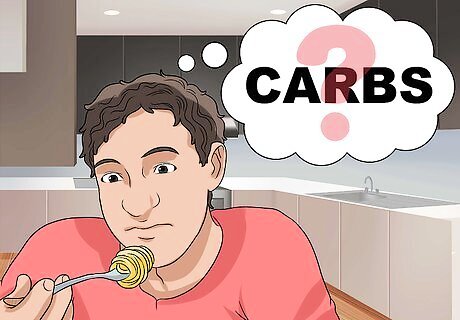
Keep carbohydrates in check at lunch. Whether it's a sandwich, wrap or leftover pasta, lunch can also be a big source of carbohydrates during your day. Keep these high-carb foods in check so you're able to stick to your low-carb diet. If you typically go for a sandwich or wrap at lunch, try swapping these options out for a lower carb option. You can try: lettuce wraps, deli meat and cheese roll-ups or even using seaweed as a wrap. If you bring leftovers from home, skip the starchy vegetables and grains and stick to lean protein and non-starchy vegetables instead. Other easy lunch options include salads or veggie- and protein-packed soups.
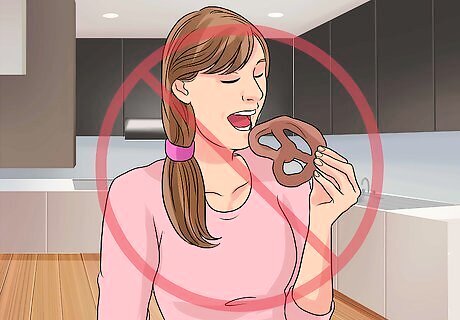
Be mindful of your snack choices. Continue to keep your overall carbohydrate intake lower by making smart and nutritious snack choices. It may be easy to grab a bag of pretzels or crackers from the vending machine; however, these foods are higher in carbohydrates (and sometimes higher in calories and low in any beneficial nutrition) and could cause an afternoon slump. Skip snack foods like: crackers/peanut butter crackers, pretzels, chips, granola bars, candies or fruit. Perk up in the afternoon with a protein- and fiber-packed snack instead. Go for 1/4 cup of nuts, a cheese stick, a hard boiled egg, 3-oz of beef jerky or sugar-free peanut butter on celery stalks.

Limit beverages with carbohydrates. Outside of the obvious sweetened beverages, there are drinks that contain carbohydrates that you should limit or skip if you're interested in following a lower carbohydrate diet. Beverages like milk, coconut water, electrolyte drinks or even 100% fruit juice all contain some sugar and are higher in carbohydrates. Instead of filling up on these types of drinks, stick to naturally sugar-free and decaf beverages. These are the most hydrating and nutritious for your body. Try: water, sparkling water, flavored water, decaf coffee and tea. Aim for at least eight 8-oz glasses (1.9 L) of fluids daily or even up to 13 glasses (3 L) daily. This is the typical recommended amount to keep you well-hydrated during the day.
Maintaining a Nutritionally Balanced Diet
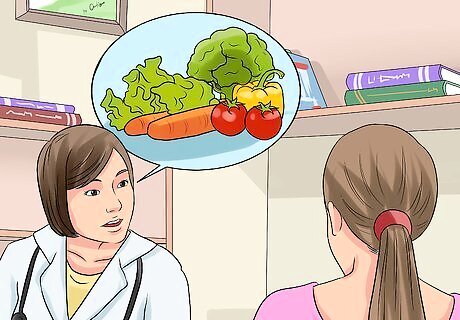
Consider speaking to a registered dietitian. If you're interested in following a low-carb diet for any reason, consider speaking to a registered dietitian. They'll be able to help design a diet that will aid you in reaching your goals. A registered dietitian is a nutrition expert. They'll be able to teach you about proper nutrition, give you guidance when following a low-carb diet and help you design low-carb dinners. Talk to your dietitian about your long-term goals or reasoning behind following a low-carbohydrate diet. If you're goal is to lose weight, they'll be able to help you reach your weight goal. Or maybe your goal is to improve your blood sugar levels — they'll also be able to help you choose the right eating pattern for this as well. Your dietitian will also be a great source of accountability for any goal. Consider meeting with your dietitian on a regular basis — like once a month.

Aim for a varied diet. Although you may be avoiding or limiting certain carbohydrates at certain times of the day, it's still important to aim for a balanced and varied diet everyday. A balanced diet is one that contains foods from every food group most days. That means choosing nutritious foods from the protein, dairy, vegetable, fruit and grain groups. Even if you're limiting certain sources of carbohydrates, you can still have a balanced diet by making sure you include all other food groups. Also have a varied diet. This means you choose a large variety of foods from within each food group. Don't only have chicken or steak as protein sources. Go for other poultry (like turkey), pork, eggs or dairy foods for a wide variety. The more variety you have, the more nutrients you'll be consuming.
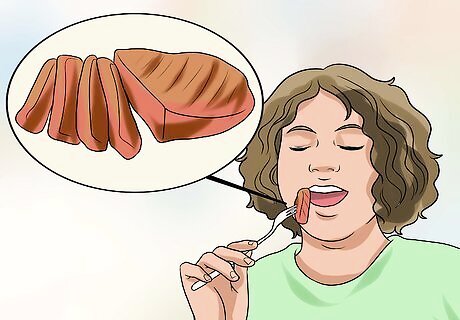
Choose leaner sources of protein. Many of your meals or snacks will be based on or focused on protein when you're following a lower carb diet. Protein is naturally low- or no-carb so it's an easy food group to rely on. Fatty cuts of meat and processed meats are not a healthy or nutritious source of protein. They're higher in unhealthy fats (like saturated fat), calories and many preservatives (like nitrates). Limit or avoid these foods. Instead, focus on lean sources of protein or those containing heart healthy fats. Try: poultry, eggs, lean pork, lean beef, tofu or seafood. These foods are naturally lower in calories and are considered a more nutritious choice. Make sure to measure your protein sources. One serving is 3 – 4-oz, or a piece the size of a deck of cards.
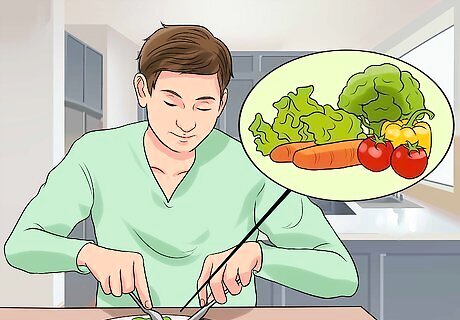
Make half of your plate a fruit or vegetable. Fruits and vegetables are very important sources of many nutrients in your diet. The most balanced, varied and nutritious diet is one that includes adequate amounts of both of these food groups. Many health professionals recommend making half your meal or plate a fruit or a vegetable. The reasoning behind this is that these foods are naturally lower in calories and higher in fiber, vitamins, minerals and antioxidants. Although fruits do contain carbohydrates, they're such a nutritious food, it's not recommended to completely avoid them. Only have a small serving and choose those low-sugar items. Any non-starchy vegetable is a great choice. Vary your choices throughout the day to maximize how many nutrients you're consuming. A good rule of thumb is to go for a different color non-starchy vegetable at each meal.




















Comments
0 comment